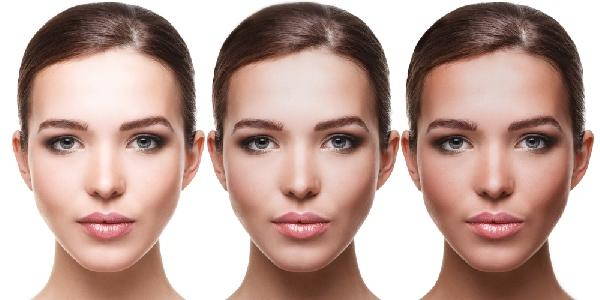Summer: It is always important to protect yourself from the harmful effects of the sun. Wherever you are and whatever skin type you have. Do you know your phototype?
Don't store avocado like this: it's dangerousSummer time get a tan? Sure, but with due diligence precautions. It is true that with exposure to the sun you take on vitamin D, essential for the development of bones and for the prevention of osteoporosis, you fight bad mood and solve many problems related to the skin, but it is equally true that it is always important to protect yourself from the harmful effects of the sun. Wherever you are e whatever type of skin you have.
If in the city the ideal is to cover up using suitable clothing, a wide-brimmed hat and apply sunscreen on the exposed parts of the body, to the sea - where the risks of burns and erythema increase - one must never forget apply protection several times, under pain of the appearance of dark or light spots, small white star scars, dry skin, the appearance of wrinkles and thickening of the skin.
So how to behave for a healthy sun exposure? The starting point would be to know one's own phototype, Since each skin is different and more or less sensitive to the sun depending on the color.
As the dermatologist Fernando Bianchi explains. "The phototype of a person is a classification used in dermatology, determined on the quality and quantity of melanin present in basal conditions in the skin. Knowing your phototype is the fundamental starting point for preserving the health of your skin and for behaving correctly during exposure ".
Once the phototype has been discovered, it will be easier to adapt one's behaviors for one correct exposure to the sun and enjoy the outdoors and the holidays by the sea or in the mountains without taking risks.

Here are the 6 existing photopites:
- Phototype 1: extremely sensitive. The skin is very fair, often there are freckles. Rashes develop easily and you never or very hardly get tanned, so you just need to protect yourself with clothes, hat, glasses and very high protection sunscreen (IP 50+)
- Phototype 2: sensitive. The skin is clear, with some freckles. Also in this case rashes are easily produced and it is difficult to tan. Maximum protection is essential: clothes, hat, glasses and very high protection sunscreen (IP 50+)
- Phototype 3: sensitive skin. The skin is slightly olive and it is difficult to get erythema. You tan easily but sun exposure is always not recommended between 12.00 and 16.00 and without full protection: clothes, hat, goggles and high protection sunscreen (IP 30 and 50)
- Phototype 4-5: quite resistant. The skin is olive to very olive, erythema almost never occurs and one tans very quickly. It tolerates the sun well, but it is always good to expose yourself very progressively. Especially the first few days, it is best to avoid exposure to the sun between 12.00 and 16.00 without full protection: clothes, hat, goggles and sunscreen of medium protection (IP 15, 20 and 25)
- Phototype 6: black skins. They are naturally protected from the negative effects of the sun, but it is good to protect the lighter areas (palms of the hand and soles of the feet) and use sunglasses. Especially in the first few days, avoid sun exposure between 12.00 and 16.00 without full protection: clothes, hat, glasses and sunscreen (IP 6 to 10)
On the sun and tan you may also be interested in:
- Sun creams: can they still be used after a year?
- Melanin: what it is, what it is used for and when to take natural supplements
- Tintarella: here are the 10 foods that make you tan more
- Melanoma: 10 golden rules for a healthy and lasting tan
As for thetanning, did you know that there are many common places? Here 7 myths to dispel:
- Can everyone get a tan? False: you have to keep in mind your phototype level
- the hottest hours of the day are the most dangerous and so that's where you need to protect yourself? In fact, it is recommended to protect yourself even between 10 and 15. Solar radiation is stronger at higher altitudes and in southern latitudes and surfaces such as water and snow practically double the amount of radiation.
- Does the cream allow you to expose yourself longer? False. Remember to repeat the application every 2 hours and, above all, after each immersion in water, especially in the first few days
- Does the bathroom protect against the risk of erythema? False: only sunscreen protects against UV rays
- do people with olive or very olive skin not need to protect themselves from the sun? False: any type of skin can be damaged by the sun's rays
- if i use high sunscreen i will not tan? False: the solar filter serves a shield the worst of the sun and to let the best pass
- don't you need to protect yourself when you are already tanned? False: even when the skin is already tanned, sunscreen helps to filter out the best part of the sun's rays
Germana Carillo


























